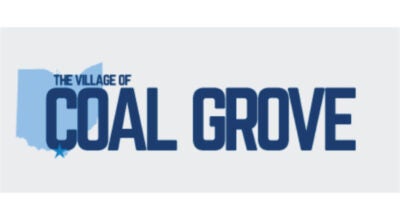The Ride to stay High
Published 11:46 pm Saturday, June 13, 2009
IRONTON — The call is made.
“Lawrence County 9-1-1, what is your emergency?”
“I need an ambulance right away.”
“Ok, what is your condition sir?”
“I’m having severe chest pains. They’re really bad.”
“Chest pains, does it hurt anywhere else?”
“I’m not sure, please hurry.”
“EMS will soon be dispatched, can I confirm your address as . . .”
Those three numbers are dialed hundreds of times a year to the county’s downtown Ironton dispatch center. Someone feels extreme chest, abdominal or joint pain and contacts 9-1-1 for immediate medical help. EMS units are en route and hospital emergency rooms have been notified. Identifying the nature of the call should be relatively easy.
Heart attack, maybe; pulmonary embolism, a chance; a viral infection, could be.
Actually all of those diagnoses, along with angina, acute heartburn, aortic dissection, panic attacks and pleurisy, can be ruled out. A person could recite the entire medical dictionary and still not pinpoint the reason for the call.
Here’s why.
What the caller, and only the caller, knows is that his chest is not throbbing in pain. Actually, his chest is fine. What he has done is just reserve his personal medical limousine for transport to the head of the line at the area emergency room — an emergency room that may unknowingly feed his current prescription drug addiction.
The caller also knows that Lawrence County taxpayers are going to pick up the dime for the entire trip. Not a single cent is coming out of his pocket. He does not have insurance and has no intention of paying for the trip.
The only thing the caller is sure of is the chances of him “scoring” depends on acting skills, choosing the right hospital and if the doctor he is assigned to is willing to buy his story.
EMS cannot come soon enough for this prescription drug addict.
Calls like this are not fiction or random acts. Actually, abuse of the area ambulance companies, including Lawrence County-funded Southeast Ohio Emergency Medical Services, are becoming an ever-growing nuisance.
So much so, statistics indicate that nearly 50 percent of calls that come into SEOEMS’ Ironton station are not true emergencies.
Many are emergency calls for ailments such as ingrown toenails, colds and assistance getting out of bed in the morning.
But another chunk of the non-emergency calls SEOEMS responds to comes from an underground society of prescription drug addicts who know how to beat the system and Lawrence County taxpayers out of hundreds of thousands of dollars annually.
Here is their story.
‘It is what it is’
“I need to do what I need to do.”
Meet Rachel.
Rachel is a prescription drug addict who considers herself an expert on “beating the system” to score. She admits being part of a conglomerate that uses area ambulance services and hospitals as a means to obtain prescription drugs. Asked why she goes that route, Rachel does not hesitate to answer.
“Because more often than not, it works.”
Rachel is addicted to a variety of highly addictive painkillers with OxyContin and Lortab as her drugs of choice. She has been an addict for more than 10 years.
The 31-year-old Ironton resident admits the shame that used to come with looking in the mirror and realizing that her world does not revolve around her estranged children or family, but around getting high.
“It just turned out that way. I can’t really put a finger how it came to be, but it is what it is, as they say.”
Under the condition that her real name not be printed, “Rachel” agreed to sit down with The Tribune and give a detailed account of her life as a prescription drug addict and how the “ambulance trick” she participates in operates. All other details of Rachel are factual.
“I used to be pretty hot,” Rachel said when describing her teens and early 20s in central Ohio. “I wasn’t ‘little miss sunshine’ but I knew how to get what I wanted. I don’t think I’ve ever bought a drink in a bar in my life.”
At five-foot, eight-inches, Rachel claims her looks and “bubbly personality” allowed her to enjoy many of the fringe benefits life can offer.
Even after the birth of her third child, Rachel says she was able to secure an older “sugar daddy” who gave her money to buy the things she needed not only for her kids, but for her herself as well.
“He probably spent $75,000 on me during the time we were together. Most of the money I had left over went to buying clothes, a car and eventually drugs.”
Fast forward to 2009 and Rachel’s current existence is a life of deceit and drugs.
Years of substance abuse have taken their toll on her physical appearance. Looking 10 years older than her age, Rachel is now rail-thin with unmanaged hair and dark, sunken eye sockets.
Now a mother of four children with three different fathers, Rachel lives a gypsy lifestyle sleeping in a variety of Ironton and Lawrence County homes weekly.
Asked where her children are, Rachel says they needed “to spend some time with their nana and papa while I sort some things out.”
She later confessed her kids have been with their grandparents on a regular basis for more than two years. Rachel has no means to support them.
“I haven’t held a real job in probably five years.”
The afternoon she agrees to the interview, Rachel is staying with friends in a bungalow-style house on Ironton’s south side. The house has seen better days with siding warped and shingles missing. The porch contains piles of damp clothes infected with fleas.
“Ignore the mess” Rachel says while entering the house.
The interior is no better.
Two men, probably in their late 20s or early 30s, lie on couches that butt up in the corner of the living room. Resting upon the spool-shaped coffee table in the center are some knickknacks, a remote control, candles and about a half-dozen hypodermic needles.
“Don’t worry about those, you’re here for the ambulance story,” she snaps.
After a walk through a kitchen with a sizeable stack of dirty dishes, Rachel exits a back door to a picnic table on a mildew-laden brick patio.
“So where do we start?” Rachel asks.
She is asked to start from the beginning and where using EMS came into the picture.
‘They have to take us’
The Lawrence County underground prescription drug market is a very secretive and closed society. Those who distribute or use drugs range from high-school dropouts on the verge of skid row to businessmen and women who guard their addictions closer than their own Social Security number.
It is also very lucrative if you distribute and very expensive if you use.
Market prices on the streets of Ironton for the popular opiate-based drug OxyContin are $1 a milligram. With most OxyContin pills available in its 80 milligram form, users unable to secure any type of legal prescription can be forced to shell out up to $160 for just two pills.
Much of the OxyContin distributed illegally in the county comes from financially-strapped doctors with loose prescription pens or the drug routes from the south, mostly out of Florida.
Those unable to get prescriptions written or who are low on cash have little options for their fix. That is where the county’s high theft rate comes into play.
“When you have no money, people do some interesting things,” Rachel said. “You have to become very creative to find cash streams because dealers don’t take checks, money orders or credit cards. None of us have health insurance either.”
One scheme Rachel said friends of hers did in order to raise cash were fencing stolen items at area rummage and yard sales around Ironton.
“They would go out and look for things that could bring some value and steal them. Small things, like iPod’s, video game systems, leather jackets, you name it. Once they got enough items that could bring in a nice penny, they would try to sell them privately or hold weekend rummage sales.”
Rachel said the rummage and yard sales ended due to the chance the victim also might be the buyer.
“Everybody in Ironton knows everybody. It was way too dangerous and risky, plus it took a lot of work. There had to be an easier way.”
And they found it.
According to Rachel, following the advice of a friend who dealt with medical laws and policies, they figured out that publicly-funded ambulance services, like SEOEMS, were required to respond to a patient’s call regardless of the circumstances. Plus, most EMS calls get preferred treatment at area emergency rooms, meaning less waiting in triage.
“They have to take us. It’s a free ride to the front of the line.”
They also figured out what conditions to call their “emergencies” under in order to have the greatest potential in snagging the prescriptions drugs they needed. After discussions with an area medical associate, the conditions they would use were finalized to chest and joint pain.
Following some internal role-playing they were ready. The first call was going to be chest pain.
“It worked like clockwork. The call was made, EMS came, he told the medics his choice of hospital and he was admitted within minutes while we waited in the parking lot,” Rachel said. “An hour and half later, he was walking out with Lortab.”
Rachel said they learned ahead of time current hospital procedures for conditions like chest pain.
“When you are admitted to an emergency room with chest pains, most doctors are going to want to administer nitroglycerin right away. By putting up a strong stance and saying you need something stronger, your wish might be granted.”
And what if things do go as planned?
“You get the heck out of there. We had a rule that if you felt it wasn’t your day, demand the AMA (Against Medical Advice) release document, sign it and walk out the door. There is always another day and a variety of hospitals to choose from.”
All four Ashland, Ky., and Huntington, W.Va., hospitals were contacted and asked about this problem.
Only Cabell Huntington Hospital returned calls to The Tribune, to say they would look into what procedures the hospital has if they suspect a prescription drug addict might be abusing their emergency room.
The choice of hospitals and the guidelines publicly-funded ambulance services operates under makes Rachel’s ride to stay high an inviting opportunity. An opportunity officials from SEOEMS say is at a level of abuse.
‘Musical hospitals’
Richard Chandler is an experienced paramedic. He is the type of EMS medic that earns high praise from those across the medical spectrum. A 19-year SEOEMS employee, Chandler has seen nearly every type of medical emergency. He currently serves as SEOEMS Ironton Station Chief.
Sadly, he has also seen the abuse grow since joining the ambulance service in 1990.
Chandler confirmed the “ambulance trick” scheme is alive and well in Lawrence County.
“It happens all the time,” Chandler said. “It continues to be a growing problem. As the economy gets worse, it has become more prevalent.”
Chandler said the addicts have also become more brazen in their attempts.
He gave an example of a recent call where SEOEMS responded to a patient complaining of severe abdominal pains and asked to be transported to King’s Daughters Medical Center for treatment.
However, EMS staffers were shocked to find out minutes after dropping the patient off at the hospital’s emergency room, the patient was in a car sitting at a red light next to the same ambulance that had just delivered him.
But, as Chandler said, this setback wasn’t going to deter this alleged addict.
Just a few hours after calling 9-1-1 and asking to be taken to King’s Daughters Medical Center, the same individual called 9-1-1 again on the same abdominal pain complaint.
This time though, when asked by SEOEMS medics what hospital he would prefer, the patient told them Our Lady of Bellefonte Hospital.
And in both cases, SEOEMS was required to respond to the call and in both cases never got a single dime of payment out of it.
“The abuse of EMS services is becoming a terrible burden on the taxpayer,” Chandler said. “We have people who have called us three or four times and each time they request to go to a different hospital. We sometimes can see a pattern, but that takes a long time to figure it out.”
Statistics provided by SEOEMS show that in a 20-year period, emergency runs made by the ambulance service in Lawrence County increased more than 120 percent despite a drop in county population and age median.
SEOEMS now averages more than 550 runs a month compared to 250 in the early 1990s.
With all the non-life-threatening and bogus runs now burdening SEOEMS, Chandler conservatively estimates those call-outs cost taxpayers more than $100,000 annually.
Before last month, SEOEMS was subsidized by Lawrence County taxpayers for 42 percent of their operations in exchange for lower ambulance rates than the county’s private EMS services
In May, Lawrence County Commissioners altered the county subsidy for SEOEMS to 15 percent by enacting a rate increase for both advanced life and basic life runs along with increases in treat-no-transport runs, where medical assistance is needed without a trip to the hospital.
Chandler points to most of the issue as the way society has changed in calling for injuries.
“You have patients now who call EMS to get picked out of a chair or to get lifted out of bed,” Chandler explained. “What you’ve done is taken the ambulance away from someone who truly needs an ambulance.”
SEOEMS Executive Director Eric Kuhn shares Chandler frustrations.
“These people have turned EMS services into a game of musical hospitals,” Kuhn said. “It’s a pretty common tactic.”
He said that while all ambulance services are victimized time and again, SEOEMS is especially vulnerable due to its inability to refuse an emergency call — something private ambulance services have the opportunity to do.
Kuhn, who joined SEOEMS in 1980 and was appointed its executive director in 1997, said areas like Lawrence County should be averaging a daily run rate of only one emergency for every 10,000 in population.
With 60,000 residents, the county should be averaging approximately 180 true emergency runs a month, not the 550 runs SEOEMS currently is saddled with.
“The non-emergency calls are costing a significant amount of money,” Kuhn said. “There needs to be increased education on the proper uses of 9-1-1.”
As for the prescription drug addicts who use SEOEMS as their own private taxi, Kuhn knows there is not much his service can do right now and any type of solution requires identifying a pattern and a little bit of luck.
But do not tell that to Ed Hughes. He has looked prescription drug addicts right in the face and has walked away with positive results.
‘A powerful high’
“No one seeks to become addicted to prescription drugs,” explained Ed Hughes, executive director of The Counseling Center, Inc. when asked about why powerful prescriptions are chosen over other narcotics.
Hughes, whose operations are in Portsmouth, has seen up close what prescription drug abuse has done to southeastern Ohio.
“We are in an epidemic here. The potency of these prescription pain killers is different than it has been in the past.”
Hughes said the abundant supply of highly addictive, opiate-based drugs like Percodan, Vicodin, Demerol and the king of the hill OxyContin have resulted in a huge spike of young people finding themselves addicted.
He alleged doctors have been way too aggressive in prescribing drugs like OxyContin due to “incentives” pharmaceutical sales representatives have available in prescribing the powerful pain killer.
But even not getting a prescription doesn’t mean a fix isn’t going to happen.
Hughes cited a recent area trend where Fentanyl patches are being scraped down to draw out the drug for illegal use. Fentanyl is a powerful drug used to treat post-operative and chronic pain. It is 81 times more potent than morphine.
In Scioto County alone, the number of accidental deaths caused by opiate-based drugs has increased 429 percent.
Statewide, overdoses passed automobile accidents as the leading cause of accidental death in the state of Ohio for the first time in 2008.
“What addicts are dealing with is a high that is so powerful, people are addicted from the beginning,” Hughes said.
And that is what Rachel deals with every single day — being addicted from the beginning.
“I’m not proud of it, and I do believe I will get clean. But for now I’m living one day at a time and if today is the day for me to turn it around, then so be it. But if it isn’t, then I’m going to live my life the way I want to.”
As for additional ambulance attempts to score, Rachel said she was not sure when that would happen saying she was “set” for a while.
“We are actually scoring through a new channel and it’s become a little easier for us to get what we need. But the ambulance trick will never go away.”





